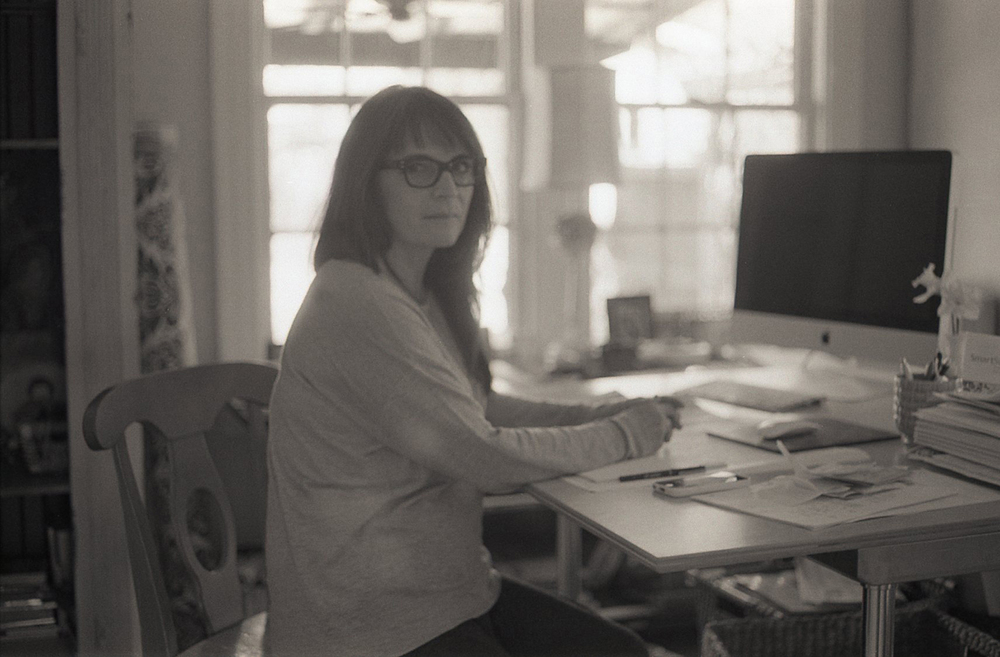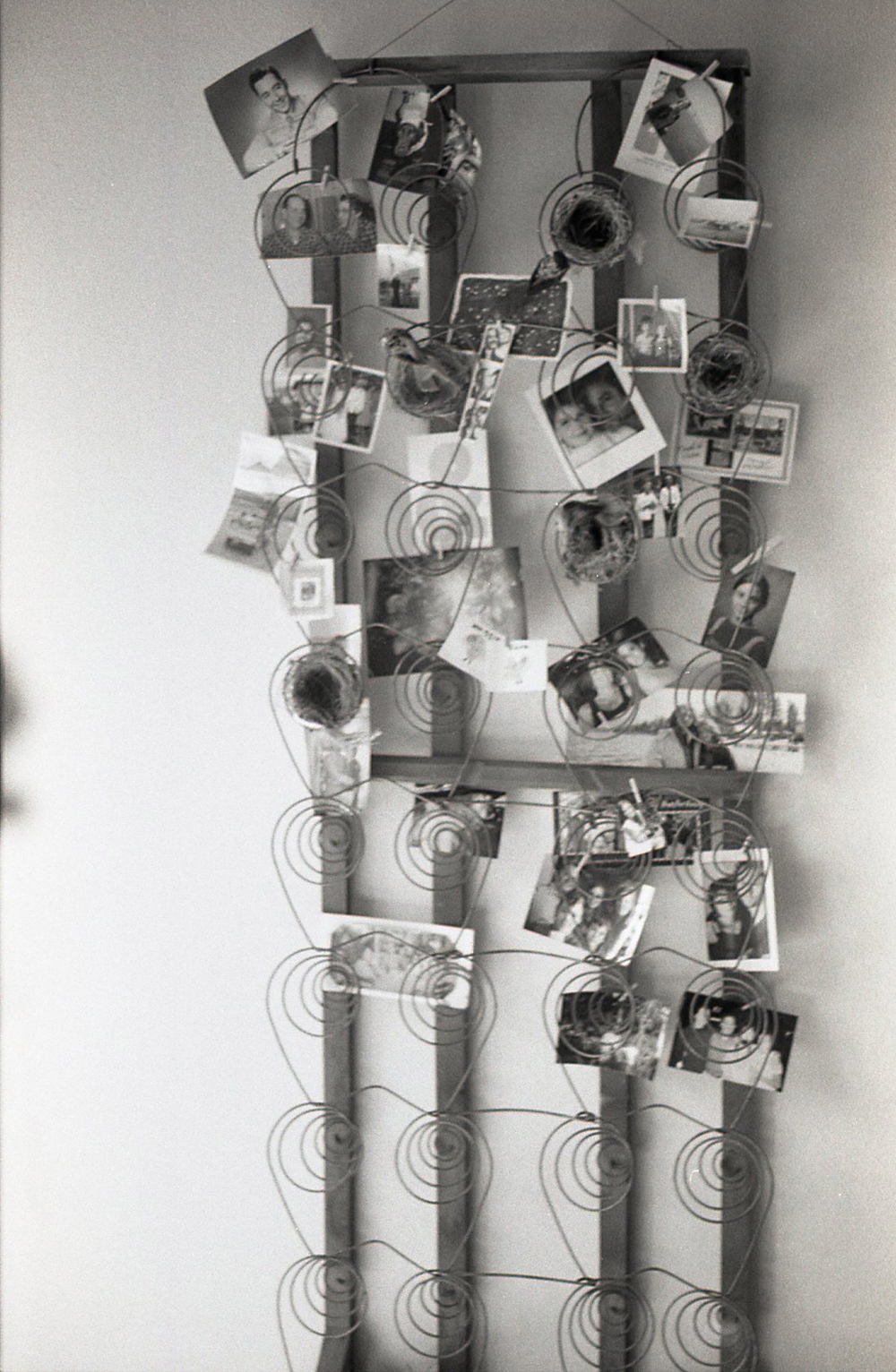Interview | Maggie Anthony
The sun was warming the cool driveway. I walked up to an open door and was greeted by a woman with glasses and flowy clothing and a warm voice. She was telling me about her neighbor’s dogs and her own and while I made my way over to her dining room table she offered me coffee and berries from across her large, open kitchen. I was enthralled. As she fixed the coffee I eyed every detail that I could see. Colors, perfectly stacked books, paintings and statues, it was all so well lived in and beautiful - I felt as if I had known her and her family for years. “Here’s my stack of Kinfolk,” she said as we started in on an already known common ground between the two of us. The clean aesthetic, the intentionality of content and quality, were all points of interest that we both sat on the edge of our seats to discuss. “I’m so intrigued,” she said as she brought over my steaming coffee, “it feels like there’s this generation gap and people that are your age are drawn to that - for me growing up it was a part of our fiber, it was part of what we did, so is there a gap?”
This started me on a rant on slowness and technology and several minutes later I realized how many words had crossed my lips and I quickly wrapped up whatever point it was I intended to make. “It’s so beautiful and I love it,” she said calming my nerves once again and making me feel understood, “it’s that connection that things are meaningful. My subtitle in my work is that beauty gives us hope, beauty equals hope. Technology is awesome and I love it but there’s that intimacy and a slowness that was lost. That’s what I love so much about Kinfolk, it comes to the door, it’s like this piece of holy grail, and I will not open it until I can fully be with it and then it speaks to me. I love it!” She took a sip of coffee and popped a fresh raspberry in her mouth.
Maggie’s nature is calming and welcoming. She is a woman of incredible talent, enchantment, and overall style, and it is only natural to feel a slight intimidation in her presence. Throughout the beginning of our conversation I found myself entranced by her views and her way with words. At one point I was so lost in thought about how she spoke that I was letting the room sit in silence for longer than an interviewer is allowed. “So ask me questions!” she chimed in, breaking me out of my slight trance.
“I don’t think that I can separate the core of who I am and my work. It’s all the same, there is no separation,” she said as she began describing her passions, or as I defined, what drives her and gives her life. “My work is a manifestation of knowing my story and knowing who I am. The older I get the clearer it becomes to me. So what really drives me in doing what I do is finding my core, who I am. As I am present and as I am connected with God, with the ground, with my husband, with those people around me, it all feeds what I do. When I walk into a home it’s the narrative - who is the family, what is the family like, what do they do - holding it in a very holy way, I step into it and create a story for the family. If it works it works beautifully. When you have that connection it feeds your creativity and for me it feeds what I do. If I had to label that as ‘passion’ I would.”
During our conversation her husband Dane, a teacher of mine at the time, came through the door and we all caught up for a while. The feeling of home was dominant and as we got back into our conversation I felt a pull towards defining process and pressing into what informs not only who she is but how she goes into a space and creates beauty. “There’s life experience, there’s a lot of life experience - I’m 63 years old.” She laughed at my utterly shocked expression and continued, “but there’s a lot of suffering that informs what I do. There’s a lot of sorrow but there’s a lot of joy too, and as I step into that it gives me the wisdom and it gives me the confidence and it gives me the intuitiveness to be able to connect with people. That’s how it manifests itself.” Language of community and connectedness was central in her story. “Many times too I don’t have a clue. There’s times when I walk into an environment and I’m completely intimidated by it. I walk in and I go, “what the hell am I doing here?” but as I step into that, that’s part of the process for me. It helps me to step in, enter into the conversation, and then as it progresses realize, ‘okay I don’t know but it’s alright’. And I think that’s part of being older and doing this for decades, is that you don’t necessarily always have the answer, but you get to say ‘I don’t know and that’s really okay and I can rest in that’ - trusting the process.”
In 2006 Maggie’s son was convicted of murdering his former girlfriend in Nicaragua - a crime he did not commit. “Our lives blew up - everything that we knew was gone. Dane quit his job at Belmont, and I quit what I did to save Eric. It was the business of getting him free and eventually we were able to do that. That’s a huge story in itself. What I want to get to is that during that whole process there were so many things that we learned about ourselves - when you go through a trauma like that you really learn who you are. We will never be the same. Nicaragua is a beautiful country, but very poor, very impoverished, it’s not an easy culture to be around. Consequently very early on we made a vow to one another that we would find one beauty in that day. And we found beauty everyday, in the most insignificant of ways. And I tell you that cause there was a real thread in that that carried us. As we were able to find the beauty in that day, we knew we were okay.” As she spoke I was taken into another world of trauma and uncertainty and awe. “So fast forward to 7 years later, to who we are today,” she continued, “the transformation that happened to us is our core now. Having that situation, having experienced beauty every single day, that spoke to my trauma and spoke to my broken heart, it’s so important to me - it’s my gospel in a way. When I go into people’s homes - and I go into a lot of sad and broken homes - I’m able to walk into those environments and carry that truth with me, it’s really powerful. It’s transformative. It’s not just bringing that physical beauty I’m able to have conversations that touch the core and the heart of what beauty can do for their hearts and their family.”
A couple of hours had gone by without my knowledge. We got up and Maggie took me around her home, showing me treasures, paintings and statues of Mary, telling me stories about certain pieces and telling me why she designed each room a certain way. We walked outside and Dane was pulling piles of dirt out of a small pick-up. We spoke and then walked down the intentionally carved out path, surrounded by soon to be beds of veggies and greens, towards a modern, simple structure. The sliding glass doors led to Dane’s office for his spiritual guidance meetings. She explained that every part of the experience from driving up, to walking down the path, to entering the building was planned. As she spoke I felt a calmness fall over me and every aspect of the room added to it’s aura of peace and openness. The art of an interior designer - curators of a physical space, a room, a place of life - is an incredible thing. It can, as Maggie described to me in such beautiful detail, create beauty from brokenness without most people even being conscious to it. Many lives are healed in that space and it’s not just the power of intentional community and spiritual guidance that Dane (from experience) does incredibly well - it’s the curation of the space that comes alongside his guidance to create something even more welcoming and healing. It’s beauty that permeates the brokenness and allows it to be known and be healed.
Maggie was one of our first stories and one of the inspirations for this entire project. Thank you so much Maggie for being who you are and sharing it with me over the past few years.












